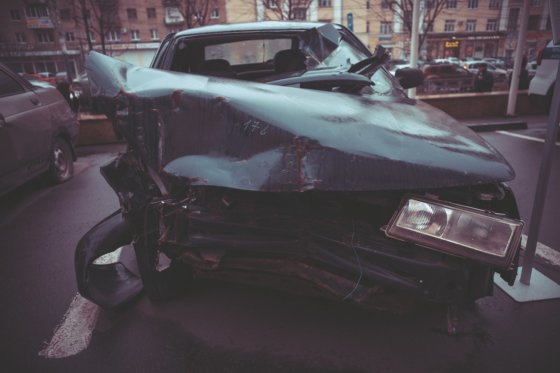
A head-on collision significantly increases the force of impact during an accident. Instead of the force of just one vehicle’s speed striking another, the two vehicles impact with their combined force. In a head-on collision with a large truck, the other vehicle’s occupants may face even greater force. As a result, head-on truck collisions often lead victims to suffer more catastrophic injuries than other types of crashes.
Read on to learn more about what you can do to prevent a head-on truck accident. If you have already been involved in a crash speak with the skilled truck accident attorneys at the Ivan Diamond Bronx Personal Injury Attorney to learn your legal options.
7 Most Common Causes of Head-On Truck Collisions
A variety of factors can lead to head-on collisions with trucks. By nature, large trucks take up more space on the road than other vehicles. Other drivers have less room to maneuver and truck drivers are afforded a smaller margin of error. Under these circumstances, any error, however slight, can cause or contribute to the occurrence of head-on collisions. Head-on truck accident causes are:
Crossing the Centerline
The line down the center of the road designates the space allotted to vehicles traveling in opposite directions. The rules of the road dictate that vehicles traveling in opposite directions should never cross over the centerline. Larger trucks, taking up more space than passenger vehicles, may inadvertently cross the centerline. A moment of inattention or a minor driver error can quickly lead to a head-on collision with other vehicles.
Driver Inebriation
Driving under the influence of drugs or alcohol decreases a driver’s ability to control their vehicle. Truck drivers in the United States have the highest frequency of positive tests for alcohol across the globe. A shocking 12.5 percent of American-based truck drivers tested positive for alcohol.
Unfortunately, even more truck drivers tested positive for amphetamines. Truck drivers, often expected to work 70 hours a week, may resort to drug-use to keep up with the demand. The use of alcohol, drugs, prescription medications or even over the counter medications can cause drowsiness or disorientation. Driving under the influence of any of these substances can significantly increase the risk of accidents. Unsurprisingly, driver inebriation commonly contributes to the occurrence of head-on collisions.
Wide Turns
For certain right-hand turns, large trucks must swing the front of the truck left before turning to safely avoid obstacles. While turning, truck drivers are expected to remain within the confines of their driving lane; however, that is not always possible. A turning truck, crossing into the opposing lane, increases the likelihood of striking vehicles traveling in the opposite direction.
Drowsy Driving
Driving while exhausted undoubtedly decreases a driver’s ability to stay attentive. A driver who dozes off behind the wheel can quickly lose control of the vehicle, crossing into the opposing lane. Truck drivers are often expected to drive for as many as 11 hours out of a 14-hour shift each day. Demanding driving shifts commonly lead to drowsy driving, especially for those drivers who failed to get an adequate night’s sleep. Unfortunately, even dozing off for just a few seconds can cause the vehicle to steer into oncoming traffic.
Driving the Wrong Way

Truck drivers are often required to navigate unfamiliar routes. One-way streets and heavy construction can further complicate a driver’s ability to navigate safely. Despite signs and safety measures to prevent driving in the wrong direction on a one-way road, these accidents remain common. Even if a truck driver quickly realizes their mistake, it may be difficult to correct. Unfortunately, driving the wrong way can lead to accidents.
Driver Distraction or Inattention
As mentioned, truck drivers are required to spend long hours on the road every day. Long hours can quickly grow monotonous, making drivers more likely to grow distracted behind the wheel. Large trucks travel just as fast as passenger vehicles, but also require more room to maneuver. In just five seconds, a vehicle moving 55 miles per hour can travel the length of a football field.
The slightest distraction can cause a large truck to shift out of its lane, leading to a head-on collision. Other driver’s inattention also increases the likelihood that the shift goes unnoticed. When either driver realizes a truck has shifted into oncoming traffic, they may not have time to avoid an accident.
Speeding
Increased rates of speed, substantially increase the risk of an accident, including head-on collisions. Speeding decreases the time a driver has to respond to the possibility of an accident. High speeds may also make big trucks more difficult to control. At a higher rate of speed, the truck driver may have increased the likelihood of drifting out of the designated lane. Shifting into an oncoming traffic lane while traveling at higher speeds increases the chances of a head-on collision.
Decreasing Your Risk of Head-On Collisions
No vehicle occupant wants to be exposed to the injuries that may result from a head-on collision with a truck. Unfortunately, truck drivers cannot be forced to pay attention behind the wheel or avoid driving while drowsy or inebriated. You can, however, take several precautions to decrease your risk of involvement in an accident.
- Pay attention to large trucks sharing the road with you. Keep a watchful eye on large trucks traveling nearby, whether traveling the same direction or going the opposite way. If you notice a truck swerving toward you, safely move your vehicle to the side of the road. Providing the truck with ample space to safely maneuver past your vehicle, will decrease the chances of an accident. If you encounter a truck traveling the wrong way, you must allow room for the truck to safely pass. By paying careful attention to large trucks, you may be able to avoid an accident entirely.
- Stay in your own lane. You do not always have to shift into another lane to safely share the road with large trucks. However, you should avoid hovering close to the centerline to ensure adequate space and decrease the risk of a head-on collision.
- Turn on your headlights. At night, in particular, your headlights serve to notify other drivers of your presence. While headlights can increase awareness, you should avoid unnecessarily utilizing your high beams. High beam headlights can blind truck drivers traveling in opposing directions, making it more difficult for them to safely maneuver.
- Drive in the right lane, when possible. On multi-lane roads, driving in the right lane can significantly reduce the risk of a head-on collision. This is particularly true in poor weather conditions with decreased visibility.
After suffering injuries in an accident with a truck, especially after a head-on collision, you may need legal advice. An attorney can determine whether you may be able to seek compensation for your injuries through a personal injury lawsuit. Contact an attorney as soon after your accident as possible to start the claims process.



